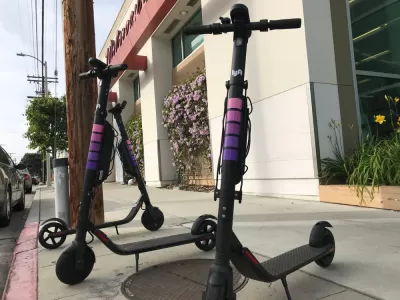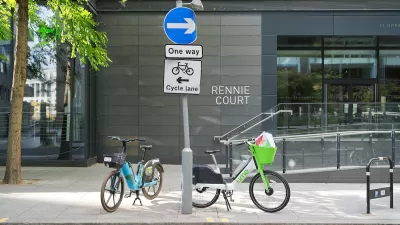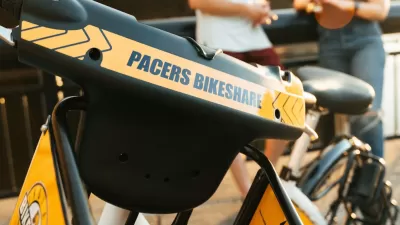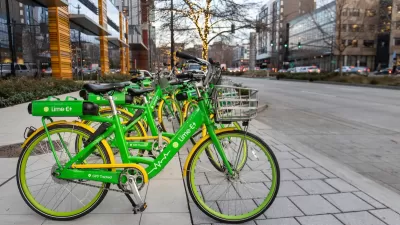The company will no longer provide shared bikes and scooters in the L.A. region, citing a ‘lack of longterm commitment’ from cities.

Lyft announced its decision to remove its shared bicycles and scooters from the Los Angeles region, saying its operations were stymied by short-term contracts and multiple operators. Matthew Hall reports on the story for the Santa Monica Daily Press.
According to Lyft, “experiences in multiple North American markets has reinforced a belief that micromobility (scooters and bikes) should be run through long term public-private partnerships with a limited number of operators.”
After becoming the first city in Los Angeles County to launch a public bike share system, Santa Monica nixed Breeze Bike Share in November 2020, citing low ridership and the availability of other shared mobility services. Since then, the city has regulated shared micromobility through an “extended pilot program” that permitted four companies to operate in its jurisdiction. The city plans to establish a longer-term contract with two operators beginning in 2023.
In the meantime, Santa Monica’s remaining three operators will continue to provide e-bike and scooter devices. The city of Los Angeles operates its own Metro Bike Share fleet, which offers bikes at stations along the rail that runs from downtown Los Angeles to Santa Monica.
FULL STORY: Lyft withdraws bikes/scooters from Los Angeles

Planetizen Federal Action Tracker
A weekly monitor of how Trump’s orders and actions are impacting planners and planning in America.

Restaurant Patios Were a Pandemic Win — Why Were They so Hard to Keep?
Social distancing requirements and changes in travel patterns prompted cities to pilot new uses for street and sidewalk space. Then it got complicated.

Map: Where Senate Republicans Want to Sell Your Public Lands
For public land advocates, the Senate Republicans’ proposal to sell millions of acres of public land in the West is “the biggest fight of their careers.”

Maui's Vacation Rental Debate Turns Ugly
Verbal attacks, misinformation campaigns and fistfights plague a high-stakes debate to convert thousands of vacation rentals into long-term housing.

San Francisco Suspends Traffic Calming Amidst Record Deaths
Citing “a challenging fiscal landscape,” the city will cease the program on the heels of 42 traffic deaths, including 24 pedestrians.

California Homeless Arrests, Citations Spike After Ruling
An investigation reveals that anti-homeless actions increased up to 500% after Grants Pass v. Johnson — even in cities claiming no policy change.
Urban Design for Planners 1: Software Tools
This six-course series explores essential urban design concepts using open source software and equips planners with the tools they need to participate fully in the urban design process.
Planning for Universal Design
Learn the tools for implementing Universal Design in planning regulations.
Heyer Gruel & Associates PA
JM Goldson LLC
Custer County Colorado
City of Camden Redevelopment Agency
City of Astoria
Transportation Research & Education Center (TREC) at Portland State University
Camden Redevelopment Agency
City of Claremont
Municipality of Princeton (NJ)





























